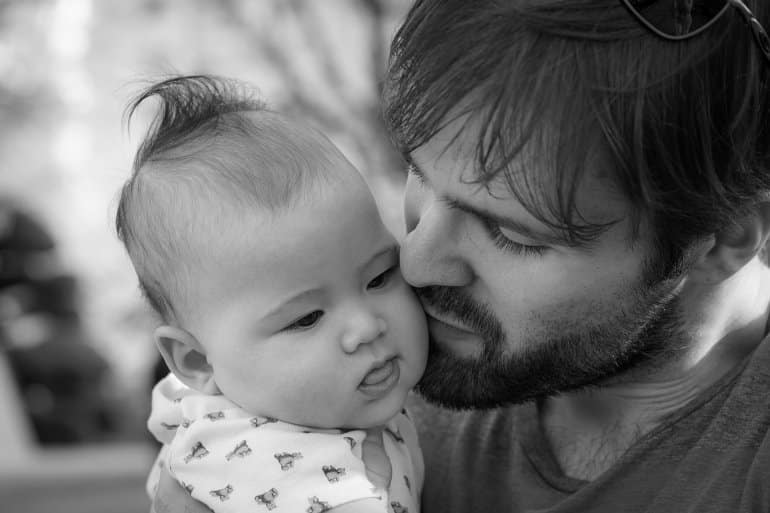Summary: A new study reports paternal anxiety is much higher than previously reported. Findings reveal anxiety in men during the perinatal period was 11%. Previous reports found anxiety in males during this period was under 4%.
Source: University of Colorado
New research suggests anxiety among men transitioning into parenthood is significantly higher than reported by the global World Health Organization (WHO) regional prevalence rates.
In a new study published in The Journal of Psychosomatic Obstetrics & Gynecology, researchers from the Colorado School of Public Health on the University of Colorado Anschutz Medical Campus studied the prevalence of anxiety among fathers during the perinatal period, which includes pregnancy through the first year of postpartum.
“The transition to parenthood is a major life event that’s often accompanied with new challenges related to financial, relationship, and work-life balance concerns. Despite those changes happening for both men and women, not much is known about the prevalence of anxiety among new fathers,” said Jenn Leiferman, PhD, professor at the Colorado School of Public Health. “To our knowledge, our study is the first meta-analysis to explore the prevalence rates of anxiety among both fathers and mothers during the perinatal period.”
The researchers reviewed eligible studies representing more than 40,000 participants that have published between 1995-2020. The researchers found that the overall estimate of anxiety among men during the perinatal period was nearly 11 percent, with rates being lower during pregnancy (9.9 percent) than during the first year postpartum (11.7 percent).
These rates are considerably higher than the global WHO regional prevalence rates for anxiety among men that range between 2.2 to 3.8 percent, suggesting the transition into parenthood may increase risk for anxiety in men.

In terms of anxiety among mothers, the researchers found an estimated 17.6 percent of women experience it during the perinatal period. This is also substantially higher than global WHO regional preferences for anxiety among women, but in line with estimates for maternal anxiety from other meta-analyses.
“The prevalence of anxiety and depression among men is talked about less as a society, even though research shows men are more likely to commit suicide or abuse alcohol than women. It’s important that we create more transparency around men’s mental health issues. Our hope is by creating awareness, we can help people get help earlier when needed,” said Leiferman.
The researchers suggest that many men suffer anxiety during the transition to parenthood, starting as soon as the first trimester throughout the first year postpartum. Given this, identifying appropriate support for new fathers as well as early identification and treatment efforts for paternal anxiety are needed.
About this parental anxiety research news
Source: University of Colorado
Contact: Julia Milzer – University of Colorado
Image: The image is in the public domain
Original Research: Closed access.
“Anxiety among fathers during the prenatal and postpartum period: a meta-analysis” by Jenn Leiferman, et al. Journal of Psychosomatic Obstetrics and Gynecology
Abstract
Anxiety among fathers during the prenatal and postpartum period: a meta-analysis
Introduction
The purpose of this review was to determine the prevalence of anxiety among fathers during the perinatal (pre- and post-natal) period.
Methods
A systematic search was conducted to identify studies published between 1995–2020. One hundred and seventy-two of the records met inclusion criteria and full texts were screened for eligibility. The authors followed PRISMA guidelines to extract the data.
Results
A total of 23 studies, representing 40,124 participants, are included in this meta-analysis. The overall random effects estimate of paternal perinatal anxiety was 10.69% (95% confidence interval (CI): 8.14 − 13.91%). Rates of paternal perinatal anxiety demonstrated significant heterogeneity that was large in magnitude (Q = 304,494, p < .001, I2 = 99.93 and τ2 = .5381). Study quality rating did not appear to moderate rates of paternal perinatal anxiety (low: 10.74%; 95% CI: 6.56–17.11%; high: 10.65%; 95% CI: 6.02– 18.15%).
Discussion
Paternal perinatal anxiety rates in this meta-analysis are considerably higher than the global WHO regional prevalence rates for anxiety among men suggesting the transition into parenthood may place men at greater risk for anxiety.






